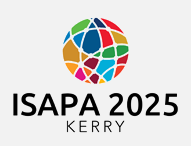Start Date
17-6-2025 12:30 PM
End Date
17-6-2025 2:00 PM
Abstract
Introduction Emerging adulthood (i.e., age 18-29) is an essential life phase for long-term development of health-related behaviors, including physical activity. However, little is known about the role of physical activity among blind and visually impaired emerging adults. Thus, the purpose of this study was to explore the perspectives and lived experiences of blind and visually impaired emerging adults within the context of physical activity.
Methodology Using an interpretive description approach, six blind and visually impaired adults (4 women, two men) aged 18-28 participated in semi-structured, individual interviews. Data analysis entailed a six-step thematic approach which, yielded three themes.
Results The first theme, “Hey, I did something active!” highlighted how participants' relationships with physical activity evolved during emerging adulthood. The second theme, “It’s not going to be the number one priority,” reflected the ways participants balanced physical activity with other life priorities. The final theme, “It takes a lot more planning,” described the barriers participants encountered when accessing physical activity in their communities.
Conclusions The findings indicate that while participants valued physical activity for its enjoyment and health benefits, their participation was shaped by accessibility barriers within their communities. Though imperfect, participants noted that the structured physical activity opportunities appreciated in K-12 education were often difficult to replicate in higher education or community settings. These insights underscore the need for more accessible and inclusive community-based programming to support blind and visually impaired individuals in integrating physical activity as a vital aspect of community living and active participation.
Recommended Citation
Kirk, T N "Nicole", "Accessing Physical Activity: Perspectives of Blind and Visually Impaired Emerging Adults" (2025). International Symposium of Adapted Physical Activity and International Symposium on Physical Activity and Visual Impairment and Deafblindness. 29.
https://sword.mtu.ie/isapa/2025/day2/29
Accessing Physical Activity: Perspectives of Blind and Visually Impaired Emerging Adults
Introduction Emerging adulthood (i.e., age 18-29) is an essential life phase for long-term development of health-related behaviors, including physical activity. However, little is known about the role of physical activity among blind and visually impaired emerging adults. Thus, the purpose of this study was to explore the perspectives and lived experiences of blind and visually impaired emerging adults within the context of physical activity.
Methodology Using an interpretive description approach, six blind and visually impaired adults (4 women, two men) aged 18-28 participated in semi-structured, individual interviews. Data analysis entailed a six-step thematic approach which, yielded three themes.
Results The first theme, “Hey, I did something active!” highlighted how participants' relationships with physical activity evolved during emerging adulthood. The second theme, “It’s not going to be the number one priority,” reflected the ways participants balanced physical activity with other life priorities. The final theme, “It takes a lot more planning,” described the barriers participants encountered when accessing physical activity in their communities.
Conclusions The findings indicate that while participants valued physical activity for its enjoyment and health benefits, their participation was shaped by accessibility barriers within their communities. Though imperfect, participants noted that the structured physical activity opportunities appreciated in K-12 education were often difficult to replicate in higher education or community settings. These insights underscore the need for more accessible and inclusive community-based programming to support blind and visually impaired individuals in integrating physical activity as a vital aspect of community living and active participation.

